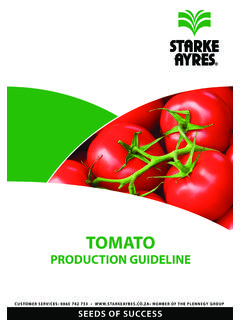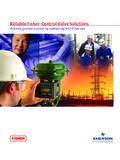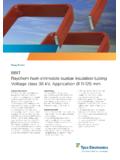Transcription of Ohio State University Extension Fact Sheet - The …
1 ohio State University Extension fact Sheet Department of Horticulture and Crop Science 2001 Fyffe Court, Columbus, ohio 43210-1096 Preparation and Planting of Landscape Plants HYG-1014-97 Mary Ann Rose1 Elton Smith The values of landscape plants are many, including their influence on climate, air purification, erosion control, noise reduction, privacy screening, and increasing property value. Plants are important to the microclimate because they absorb heat from the air during the transpiration process (release of water in the form of vapor), provide shade that reduces solar radiation and reflection, lower wind speed, disperse fog, and influence snow deposition. Businesses have noted that attractively landscaped buildings result in above average labor productivity, lower absenteeism and easier worker recruitment.
2 Studies have indicated people have a basic desire for contact with plants. Satisfying this need can have a strong positive influence on human behavior. Hospital rehabilitation therapists are aware of this fact and increasingly include gardening in their programs. Landscape plantings are important features of private and public properties and must be selected, planted, and maintained with skill. The emphasis of this article will be on the planting process with only a brief review of selection and maintenance. Plant Selection The first step in selecting plants is based on specific needs identified in the landscape plan. A plan is important to maximize the landscape investment and meet the needs of climate control, noise reduction, privacy screening, or to satisfy other objectives.
3 The plan should address the total property, but may only include the front of the home one year and another area later. The selection process should consider factors such as ultimate size, adaptability to local soil conditions, exposure to sun, shade, or wind, hardiness (ability to withstand cold, drought, etc.) and maintenance requirements. Consider as well, Page 1 of 7 Preparation and Planting of Landscape Plants, HYG-1014-975/24/2008 habit, plant texture, foliage color, flowers, and fruit during various times of the year. All this information and more is available from trained landscape architects, Extension service publications, and books. The more one learns about plants, the greater will be the satisfaction gained from the landscape.
4 Landscape plants are available in several common forms: (1) balled and burlapped (B & B), (2) bare-root, (3) packaged, (4) container grown, (5) field potted, and (6) flats or market-paks. Balled and Burlapped Many trees and shrubs are commonly transplanted with a ball of soil wrapped in burlap. Field grown evergreens and most trees with trunks more than two inches in diameter are available B & B. Bare-root Dormant plants were historically harvested bare-root (without soil) and offered to the public in this form. Nurseries harvested shrubs and smaller trees in this way and overwintered the bare-root plants in refrigerated storage. Many garden centers, however, do not have facilities to properly control the storage environment during the spring sales season, and therefore, this method of offering plants is being replaced by other practices.
5 Many mail-order suppliers still provide plants in this form. Packaged Woody plants, particularly roses and some perennials such as peonies, are sold bare-root with either the root system or entire plant packaged in a cardboard or plastic wrap. Prior to packaging, the root system is wrapped with a moisture-holding medium or packing material. For the highest degree of success, plant bare-root material when they are in the dormant State or in the very early stages of growth. Container Grown This has become the primary form in which plants are available in the garden center. They are easy to maintain in the retail store and after purchase, and can be planted anytime of year unless the ground is frozen.
6 Trees are now available in large sized containers from 10 to 25 gallons or more. Many garden centers will accept the return of plastic containers and reuse or recycle them. Field Potted This technique refers to plants that have been grown in the field and when harvested, placed in a container (often a fiber pot) rather than wrapped in burlap. Typically, narrowleaf evergreens are produced in this fashion. The plants are dug and containerized in autumn, stored under a polyethylene covering in winter and delivered to retail outlets in spring. Flats or Market-paks Ground covers, perennials, and annuals are sold in these containers. There are many different styles and forms available and nearly all are made of plastic which can be reused many times.
7 Planting Season If the soil is moist and kept sufficiently watered, planting can be done anytime the soil is not frozen. B & B or container-grown plants can be planted anytime during the growing season. Dormant, bare-root Page 2 of 7 Preparation and Planting of Landscape Plants, HYG-1014-975/24/2008 is best planted in early spring or late autumn, if available. Some plant species actually survive and grow better if planted in spring. Examples include beech, sassafras, sweetgum, sourwood, walnut, white oak, or others that have few, but large roots. Most plants that have many small fibrous roots can be transplanted with a high degree of success throughout the year. Site Preparation Planting depth and a knowledge of soil texture (size of soil particles), soil structure (arrangement of soil particles), and the capacity of the soil to drain are critical.
8 The depth of planting is dependent on soil type or texture (size of soil particles, , sand [largest], silt [next largest] and clay [smallest]). In sandy loam soils that drain well, plants should be positioned in the planting hole at the level they were originally grown in the nursery (Figure 1). The original depth can be identified by a soil line on the stem or trunk of plants or by the top of the soil of B & B or container-grown plants. Most ohio soils, however, are not well drained. They usually consist of silt and clay particles, and drainage is often less than desirable. In soils that drain poorly, plants should be planted somewhat higher than they were in the nursery (Figure 2).
9 More air needs to reach the root system when soils drain poorly. In these soil conditions, plants can be placed from 2 to 4 inches higher than they were during their growth in the nursery. The major reason plants do not survive transplanting is improper moisture, , too little, too often, too much, or a combination. Soils that remain wet for long periods of time after a rain or irrigation can be managed to prevent problems. One option is to create planting beds on top of the existing soil. This could involve using landscape timbers to build up an area and filling it in with new topsoil or packaged planting medium. Another option is to install drain tile in the planting hole.
10 The drain tile works more effectively if it is situated on a slight slope so water can drain away from the planting or bed area. The width of the planting hole should be at least 2 or 3 times the diameter of the root ball. Recent research results have indicated feeder roots of trees and shrubs remain close to the soil surface, usually in the top 6 to 9 inches. This suggests that the major area of soil preparation should be the upper 12 Figure 1. Balled and burlaped plant planted at original depth with watering 2. Balled and burlaped plant slightly raised above 3 of 7 Preparation and Planting of Landscape Plants, HYG-1014-975/24/2008 , and the wider the area prepared for planting, the better.







